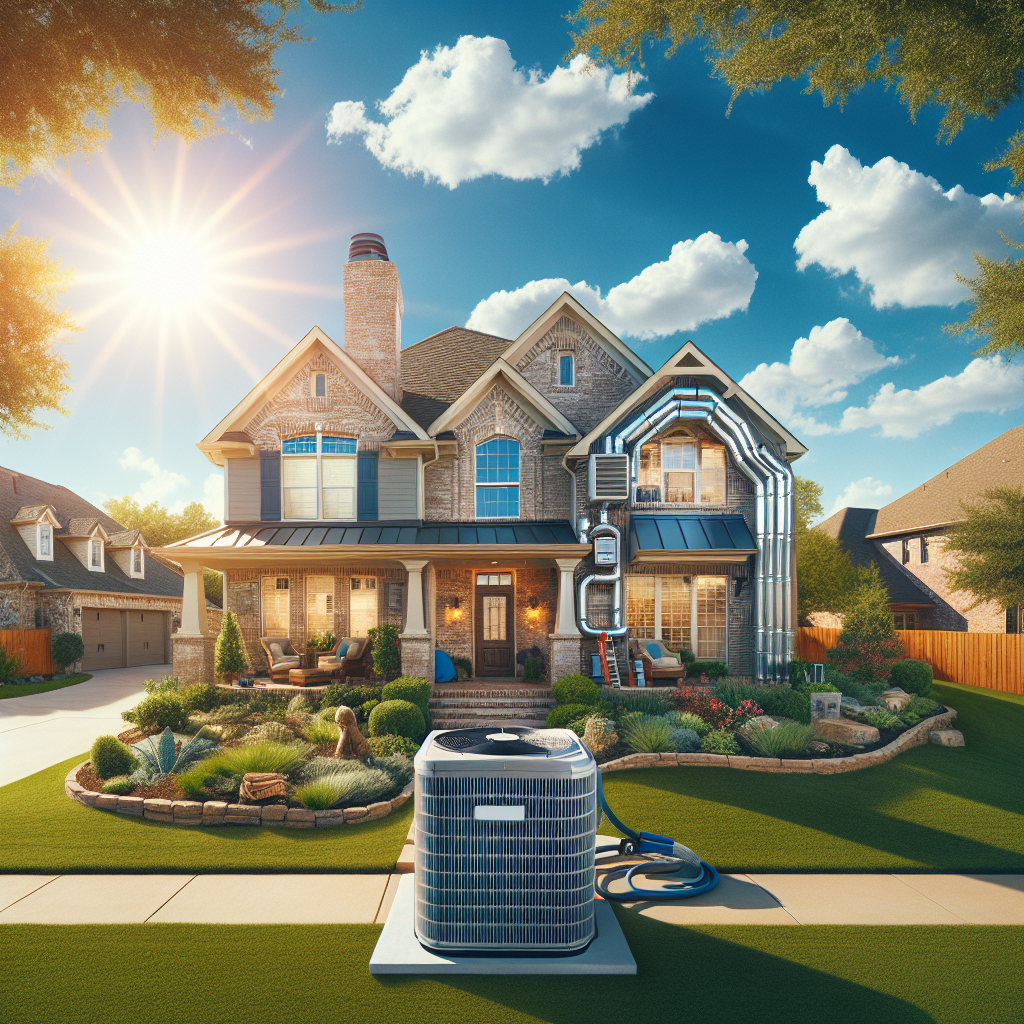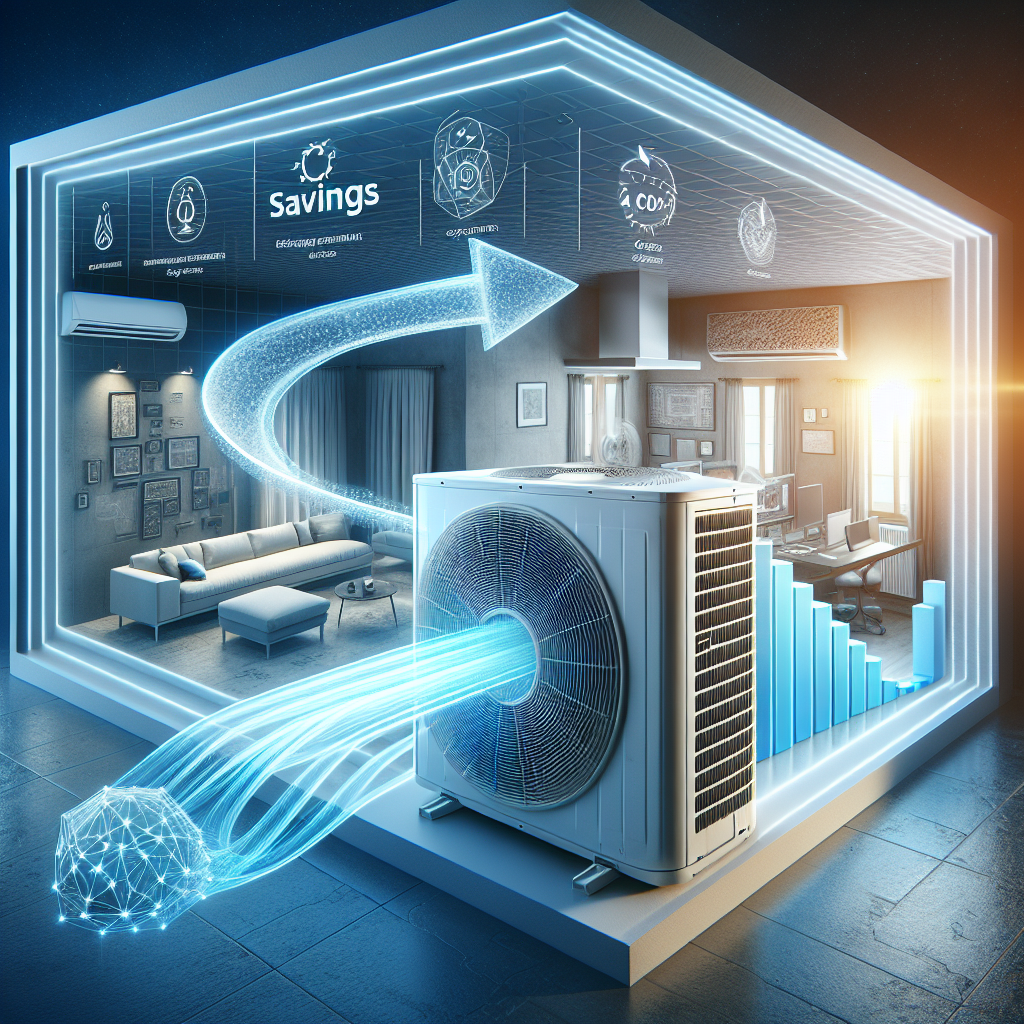If you’re considering an upgrade to your cooling system, it’s essential to get a good grasp on the expenses involved. The financial investment for a new unit can fluctuate based on a variety of factors.
Whether it’s the size of your living space or the specific model you decide on, each element plays a role in determining that final price.
With Texas summers being notoriously hot, picking the right system can keep you cool without emptying your wallet.
When diving into central AC pricing, size becomes a pivotal consideration.
A more substantial air conditioning unit might chill your home more quickly, but it also typically comes with higher initial costs. Energy-efficient systems often have a steeper upfront price tag, yet they can lead to significant savings on air conditioning unit prices, Texas HVAC installation, and the overall cost of air conditioners over time.
Click here to learn more about: prices.html
Understanding Air Conditioning Unit Prices
Now that you have a solid grasp on the expenses associated with a new cooling system, let’s break down air conditioning unit prices. Choosing the right AC model is about more than just the initial cost; it’s an investment in your comfort for those hot Texas summers.
You want a system that cools your space efficiently while being easy on your wallet.
Understanding what influences the price is crucial. Factors like brand reputation and energy efficiency ratings can help prevent unexpected cooling system expenses later on.
Also, keep in mind the installation fees for AC units. In Texas, these can vary significantly depending on your location and specific needs.
Each AC brand offers its own mix of features and reliability, leading to varied pricing. Spending a bit more on a trusted name often pays off. It can reduce the chance of problems down the road, which can impact HVAC replacement costs.
Energy-efficient systems shine in providing long-term savings on home air conditioning costs, cooling system expenses, and installation fees for AC units.
Take brands like Trane, Lennox, or Carrier, for instance. They offer not just reliability, but also smart technology options that enhance your experience with seasonal maintenance expenses and energy savings with new systems.
Balancing the cost of air conditioners with features such as smart thermostats allows for better control over your indoor climate. This means you can maximize comfort without overspending.
Plus, it’s worth checking for local utility rebates for AC. These can help lessen the impact of the initial investment.
By understanding the nuances of brand comparisons for AC units, you’ll be well-equipped to make an informed purchase. This leads to efficient cooling solutions tailored perfectly for Texas’s climate.

What Affects Texas HVAC Installation Costs
If you’re thinking about the costs involved with your new AC system investment in Texas, understanding the factors that impact these costs is super important. The size of your system is a biggie. Picking the right size for your home doesn’t just affect how well it cools your space; it can also change your comfort and overall costs. A larger unit might make things chilly faster, but watch out for those rising expenses.
Now, let’s consider how the complexity of the installation plays a role. If your setup requires ductwork adjustments or special permits, those extra steps can lead to higher costs. Plus, if your home has an unusual layout, that can create longer installation times and push your total bill up.
Then we’ve got labor rates from local HVAC contractors. These rates can really vary depending on the technician’s level of expertise and your specific area. So, taking the time to get quotes for AC installations is definitely a good idea.
While you might be tempted to tackle it yourself to save a few bucks, bringing in professionals usually means better quality work. This can save you from future headaches, especially when it comes to making that tough repair versus replace decision. Keeping these factors in mind can help you make smart choices about your home air conditioning needs.
| Factor | Impact on Cost |
|---|---|
| System Size | Larger units often mean higher costs |
| Installation Complexity | Ductwork adjustments and permits can add to expenses |
| Labor Rates | Varies based on the technician’s experience and location |
| DIY vs Professional | Hiring experts can prevent potential future issues |
Exploring The Cost Of Air Conditioners
Getting to know what affects air conditioning unit prices is super important as you look for a cooling solution that matches your needs. Once you’ve wrapped your head around the details of HVAC installation costs in Texas, let’s chat about what you can expect to pay for various air conditioning models, all while keeping your budget in check.
There are several factors that can influence the final cost, such as energy efficiency ratings and that all-important repair versus replace decision.
Now, let’s take a closer look at the different types of air conditioning units available, their price ranges, and how brands stack up against the scorching Texas heat.
When it comes to air conditioning models, homeowners have a variety of great options. Central AC systems shine when it comes to cooling an entire house effectively, while window or portable units might be just what you need for specific rooms. Ductless mini-split systems are becoming quite popular, especially in homes that lack ductwork and need efficient climate control.
Prices can really vary across these options, largely influenced by factors like the repair versus replace decision and brand comparisons for AC units. Plus, look into the financing plans for HVAC systems that local HVAC contractors might offer; they can really help in managing those costs. The average AC unit cost can also change based on the efficiency ratings and features you pick.
Brands like Trane, Lennox, and Carrier are known for their solid performance, but don’t forget about the more wallet-friendly options like Goodman systems. Understanding the installation fees for AC units and maintenance plans for air conditioning will also play a big role in your decision. And don’t overlook any local utility rebates for AC that can ease that upfront investment.
Ultimately, weighing the cost of air conditioners against their long-term benefits—like energy savings with new systems and the impact of smart thermostats—can really help you make a smart choice for your home cooling needs.
Central AC Pricing Breakdown For Homeowners
Now that we’ve looked into the various air conditioning models out there, let’s dive into the important details of central AC pricing for your home. If you’re thinking about upgrading your cooling system, understanding the ins and outs can significantly influence your budget, especially with those hot Texas summers coming up fast.
The cost of a new unit can really vary. You might find options starting around $3,000 for affordable AC systems, and they can go all the way past $10,000 for those fancy models packed with advanced features and top-notch energy efficiency ratings.
Don’t forget about installation fees! How much you’ll spend on labor depends on your home’s size and whether you need any extra ductwork or adjustments. It’s a good idea to set aside an additional $1,000 to $4,000 for these services.
Keep an eye out for any hidden costs too, like permits and inspections that could catch you off guard. By getting a clear grasp of all these expenses, you can make a smart choice on the best price ranges for central air and affordable AC systems, while also considering any quotes for AC installations and the unique Texas climate factors.
Investing in an energy-efficient system might also save you money in the long run, so don’t miss those features that boost performance while cutting down on seasonal maintenance expenses. Many brands like Trane, Lennox, and Carrier provide amazing options with superb cooling capacity. On a tighter budget? Brands like Goodman systems can still offer solid quality without breaking the bank.
Lastly, check out any air conditioner financing options that local HVAC contractors might have available to help you manage upfront costs. Knowing about installation fees for AC units and any warranty options for AC units can give you extra peace of mind. A little homework now can really pay off later as you navigate the central AC pricing scene.
Benefits Of Energyefficient Systems In Texas
As we’ve looked at the different air conditioning options and their associated costs, let’s highlight the benefits that come with choosing energyefficient systems. These modern cooling solutions do more than keep your space comfortable; they help lower your utility bills while being good for the planet.
By selecting advanced air conditioning models, you’re not just thinking about today. You’re setting yourself up for long-term perks, including major energy savings with new systems that let you enjoy a cool home without the worry of high bills. It’s like enjoying your favorite dessert, but this time, your wallet feels just as happy afterward!
What’s even better is that many of these innovative units use smart refrigerant types and costs to cut back on energy use, which helps in reducing greenhouse gas emissions. Plus, the latest tech, like smart thermostats, can enhance your home comfort even further, making your system work better.
For folks in Texas, this means not only lower seasonal maintenance expenses but also the comfort of knowing you’re doing your part for a healthier environment. With the rise of smart AC technologies, you can tailor your cooling needs while reaping the benefits of energy efficiency tax credits and local utility rebates for AC systems.
All in all, investing in an energyefficient AC system is a wise idea. It’s not just about staying comfortable today; it’s about making a solid investment in your home that pays off in savings and a healthier living space. From better indoor air quality to manageable cooling system expenses, the perks are clear and definitely worth keeping in mind as you plan your cooling solutions.
Evaluating Cooling System Expenses For Budgeting
Getting to know what’s involved in your cooling system expenses is key, especially after we’ve talked about central AC pricing and the perks of energy-efficient systems. The more you understand, the better choices you can make, which can save you cash in the long run.
Grasping the initial costs is just the start; you’ll also want to think about the ongoing money you’ll spend related to HVAC efficiency. For example, installation fees for AC units can differ quite a bit based on how complicated the job is, including any ductwork installation costs that might be necessary to get your home’s cooling working at its best.
While you’re planning your budget, don’t forget to look ahead to what you might spend on seasonal maintenance expenses and any emergency repairs that might crop up. Names like Trane and Carrier provide solid cooling solutions and come with warranties that can help you with your repair versus replace decision if issues arise.
A good budget can help you dodge unexpected surprises later, especially when those hot Texas days start kicking in. By reviewing HVAC replacement costs alongside system efficiency ratings, you can really see the value of your investment over time.
And don’t miss out on the money you might save on your utility bills with energy-efficient units—those savings can stack up and help balance out the initial costs. Lastly, checking out air conditioner financing options from local HVAC contractors can make that new AC system investment much more manageable for your wallet. With this all-in approach, you’ll be set to tackle the different parts of evaluating and budgeting for your cooling system expenses.
HVAC Replacement Costs: When To Invest
After looking at the costs tied to cooling system expenses and energy-efficient options, it’s clear that figuring out when to invest in a new HVAC unit is key. If your current system is often in need of repairs or your energy bills are creeping up, it’s definitely time to think about a change.
Lots of homeowners are leaning toward Goodman systems because they hold a strong reputation for reliability and efficiency, especially during those hot Texas summers. When the price of repairs gets close to 50% of what a new system might cost, considering a replacement is a pretty smart move.
Keep the season in mind when you’re mulling over a replacement; going for a new system in the spring can help you save money because of better availability, plus you could snag some local utility rebates for AC installations. Grasping these factors will guide you in making the best choice for your comfort and your budget.
Ultimately, this decision goes beyond just fixing immediate issues; it’s also about planning for a long-term investment in your HVAC system. By weighing the repair versus replace decision against potential seasonal maintenance expenses and energy savings with new systems, you can ensure you’re making a choice that benefits both your comfort and your finances for years ahead.
Home Air Conditioning Costs And Savings
Now that we’ve looked at what goes into your cooling expenses and when you might need an HVAC replacement, let’s break down the details of home air conditioning costs. Trying to understand your air conditioning expenses can sometimes feel like putting together a big puzzle. When you’re looking at new units, expect to spend anywhere from $3,000 to $7,000.
This range typically covers installation fees and permits, so it’s smart to lay out your budget to avoid any surprises. If you’re considering energy-efficient models, you’re definitely in for some great advantages. These systems not only help you save on monthly utility bills; they can lead to substantial savings over time.
Keep an eye on AC efficiency ratings, especially the SEER rating, since it gives you a good idea of how well your system will perform during those blazing summer days. And let’s not forget about maintenance! Staying on top of regular service can save you from expensive repairs later on. Simple tasks like cleaning or changing filters can really enhance your air conditioner’s efficiency and extend its lifespan.
| Cost of New AC Units | Energy Efficiency Benefits |
|---|---|
| $3,000 to $7,000 (including installation) | Lower monthly utility bills |
| SEER rating indicates performance | Significant savings over time |
| Regular maintenance prevents costly repairs | Simple DIY tasks improve efficiency |
Installation Fees For AC Units Explained
As we break down home air conditioning costs and HVAC replacement costs, getting a clear idea of installation fees when setting up a new air conditioning system is essential. You’ll notice that installation can come with a variety of costs, which can sometimes feel a bit overwhelming.
Different factors, like the size of the unit and how complicated the job is, play a big part in figuring out the final price. Bigger units often mean more detailed ductwork installation costs, so your bill might end up being higher than you initially thought.
Understanding these costs ahead of time can help you avoid surprises later on. Let’s chat about some unexpected expenses that can arise. It’s not unusual for necessary electrical upgrades or fixes to existing ductwork to add to your overall bill.
A handy tip is to have an open conversation with your installer about any potential extra charges you might encounter beyond the initial quote. Clarity in installation fees for AC units, ductwork installation costs, and seasonal maintenance expenses is crucial for making informed choices. Also, don’t forget to look into energy savings with new systems and local utility rebates for AC installations. They can really help lessen those upfront costs.
In the end, understanding these installation fees and knowing your options can make a real difference in your new AC system investment. Whether it’s discussing installation permits and fees or checking out air conditioner financing options, the more informed you are, the better prepared you’ll be to make choices that suit your home just right.
Local HVAC Contractors: Finding The Right Fit
Once you’ve taken a closer look at home air conditioning costs and installation fees, the next step is to find the right HVAC contractor to fit your needs. This choice is really important to making sure your new AC system runs without a hitch, so you’ll want to focus on trust and experience as you search.
Start by checking that potential contractors have valid licensing and insurance. This is key for your peace of mind and ensures you’re dealing with skilled professionals who can handle all your indoor climate solutions effectively.
Next, make sure you browse through customer reviews. Positive feedback can give you insight into a contractor’s reliability and service quality. Ultimately, contractors who focus on HVAC systems know the air quality impact of their work, so some research here can really pay off!
Another vital step is getting written estimates. This helps you understand price ranges for central air and avoid unexpected costs later. The right contractor will make this process clear and straightforward, helping you weigh essential factors like air quality, energy savings with new systems, and installation fees for AC units.
Choosing an HVAC Contractor
- Valid licensing and insurance are essential for ensuring contractor professionalism and accountability.
- Customer reviews can show you the reliability and quality of service provided by HVAC contractors.
- Written estimates help you grasp regional pricing and prevent any surprise costs.
- Researching aspects like air quality impact and cooling capacity can lead to better indoor climate solutions.
What Is The Average Life Of An AC Unit In Houston
How Much Does It Cost To Replace AC In Houston


